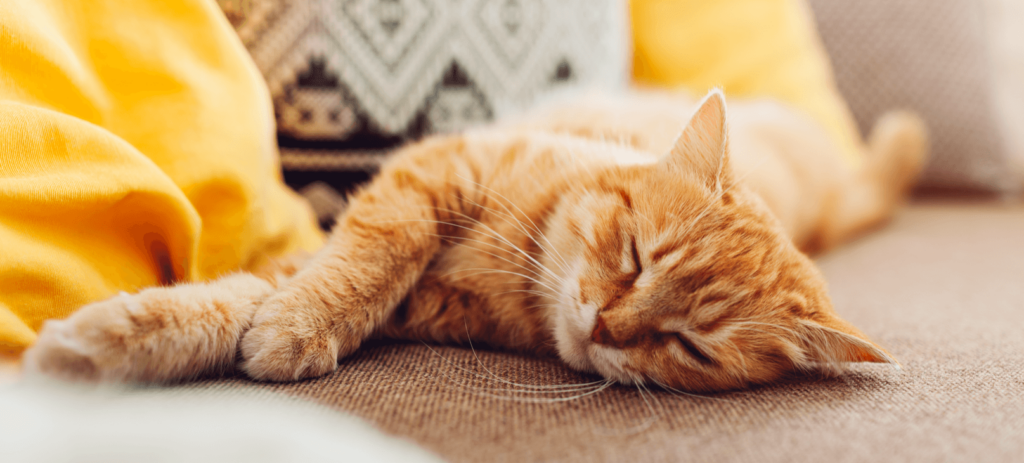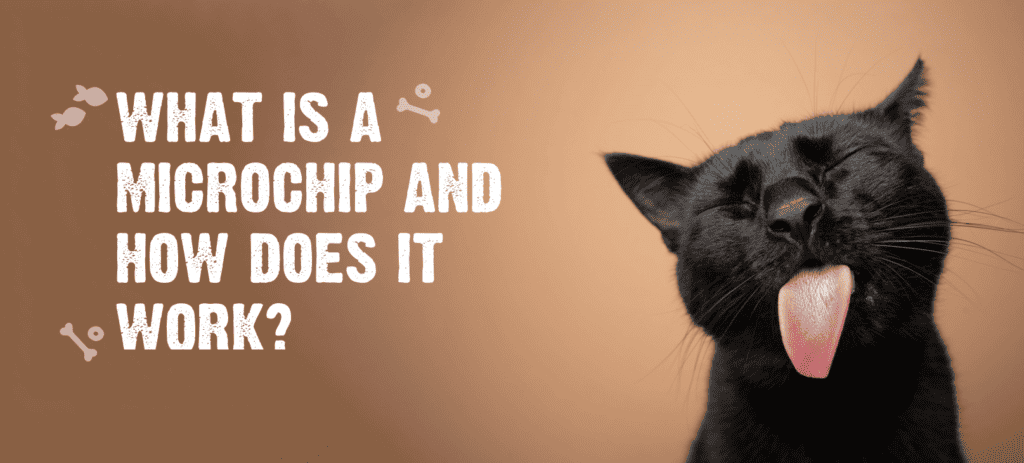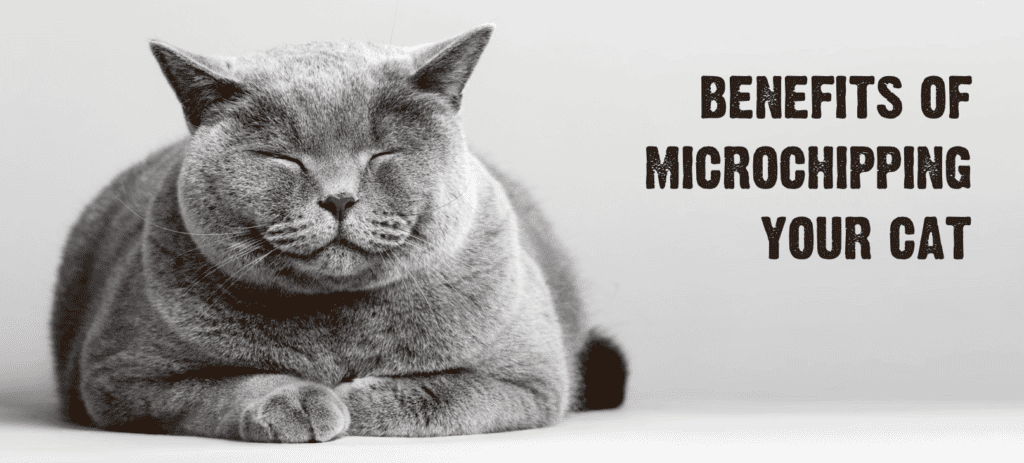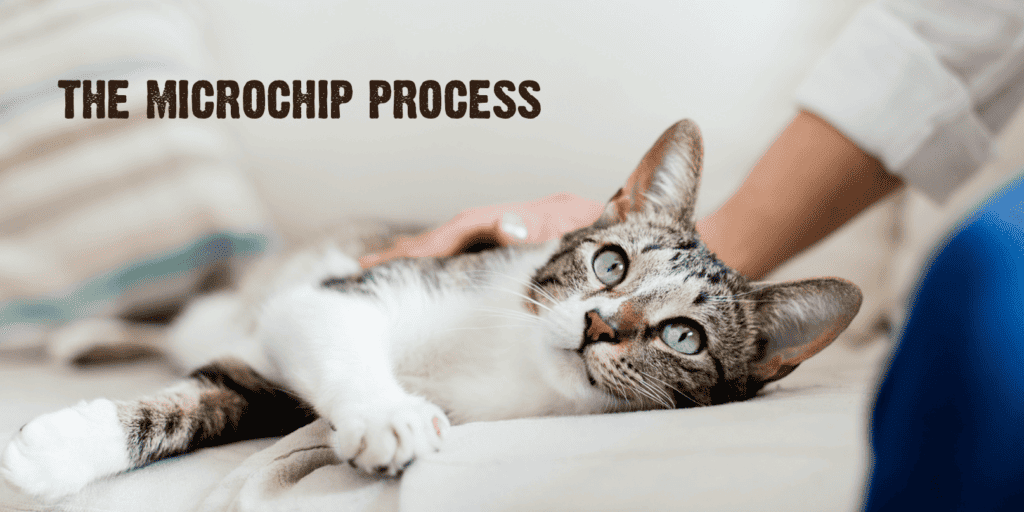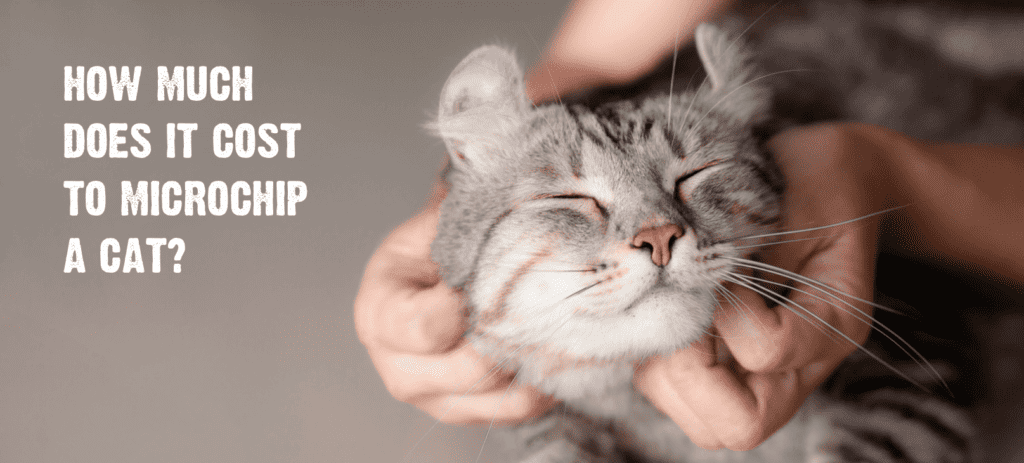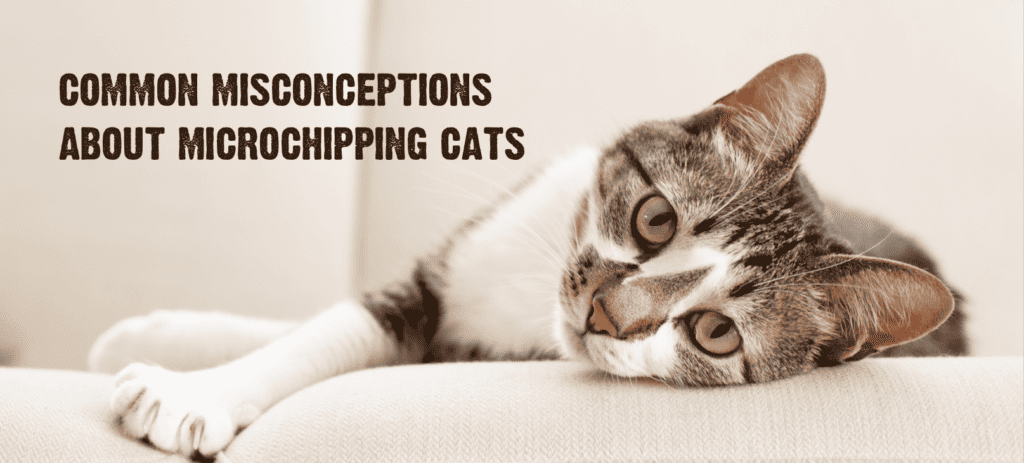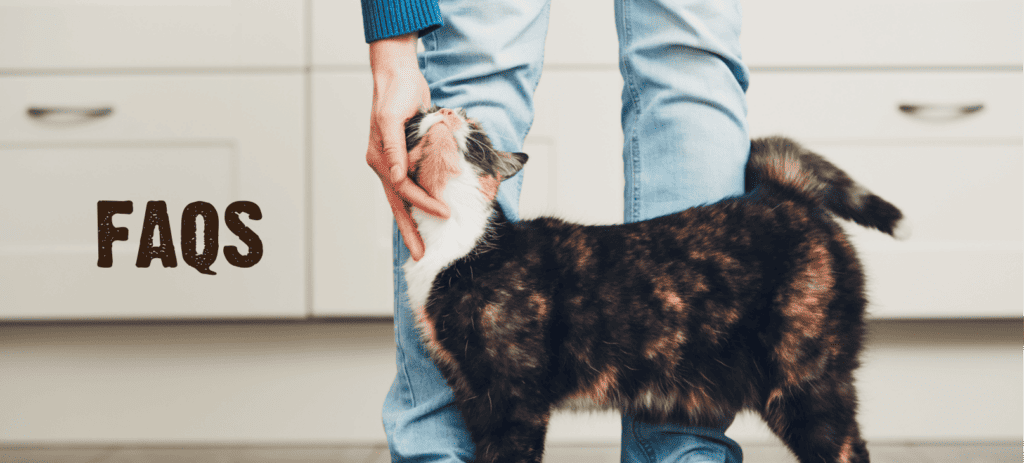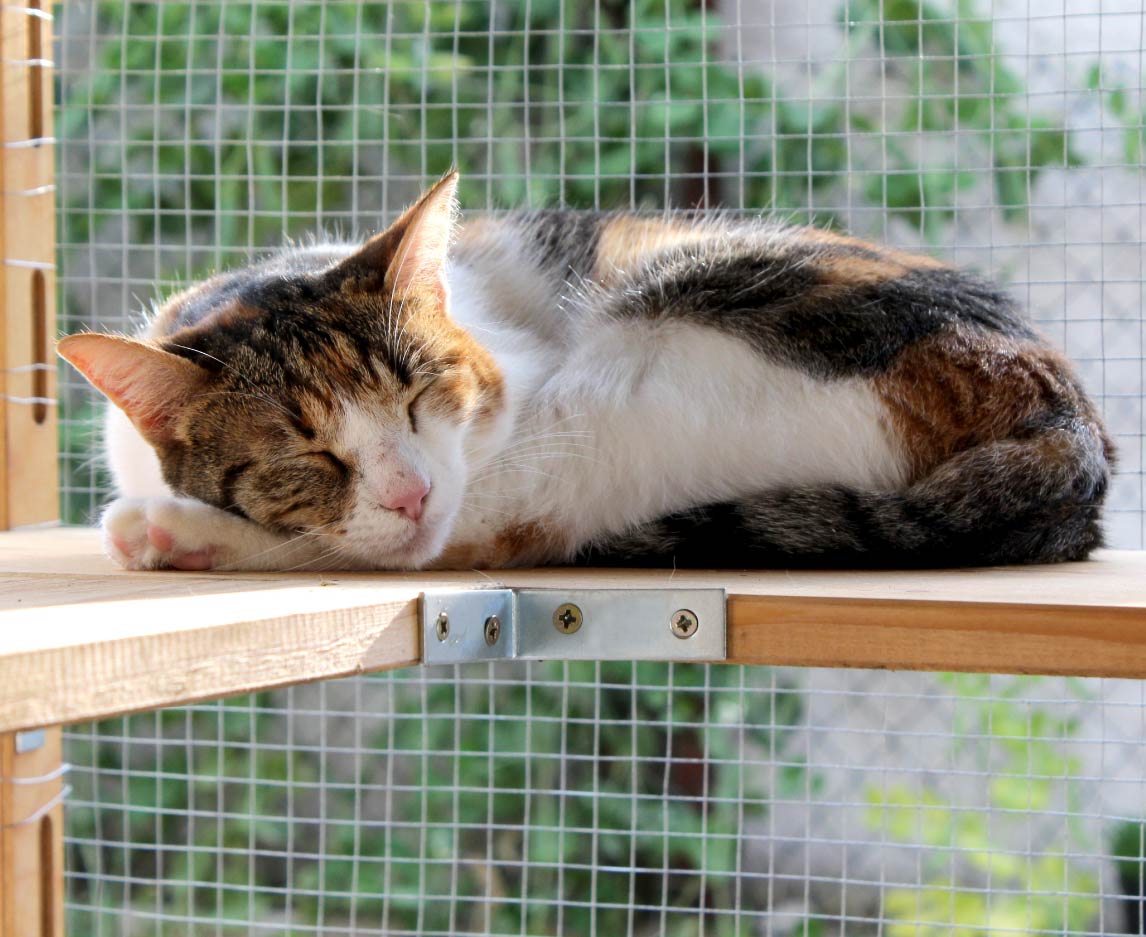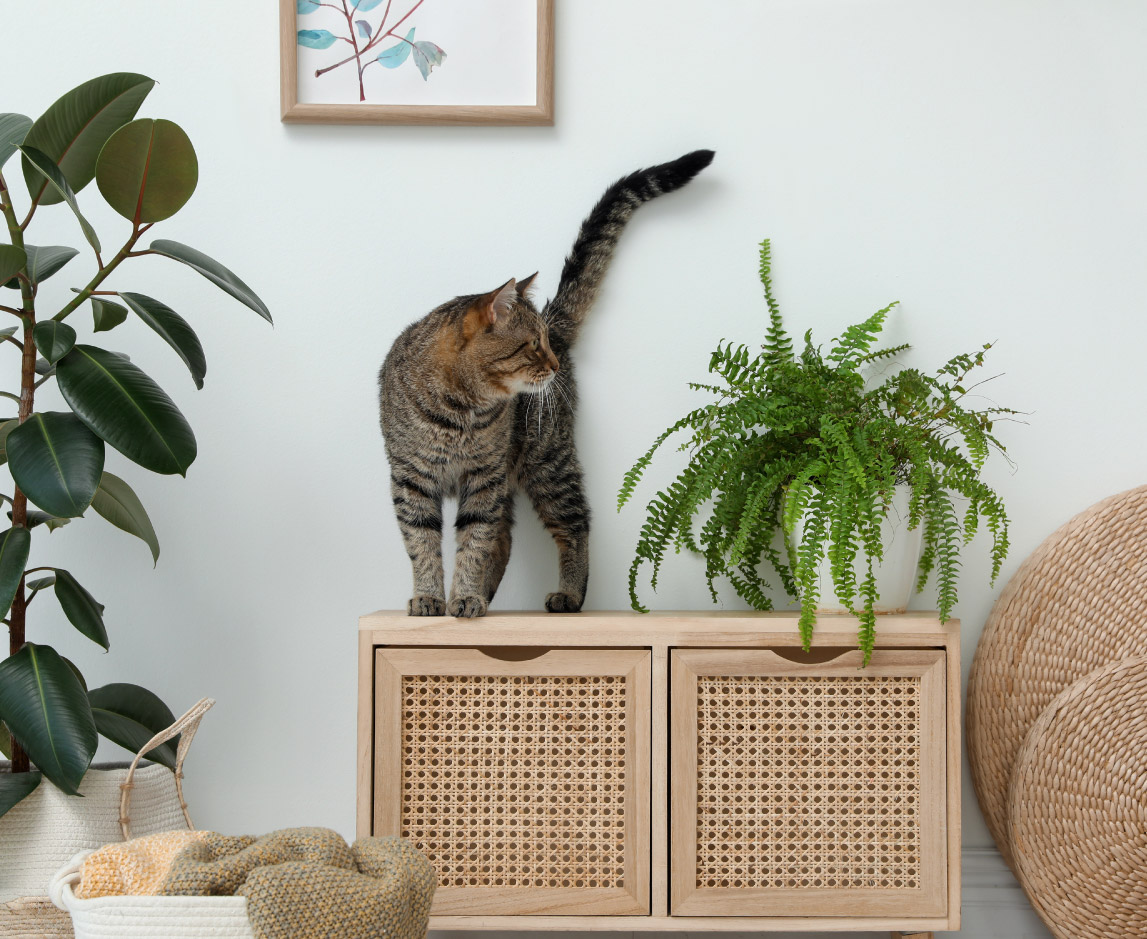A whopping 63% of domesticated cats in the United States are kept entirely indoors. With a statistic like that, you might be wondering why a microchip is important for your feline family member. Put simply, accidents happen — a door is left ajar, a window screen pushed out or some other mishap.
In those situations, you’ll be thankful that you opted for the permanent identification of a microchip. To better understand, we’ll explain the process and cost, debunk common misconceptions and list some more benefits of a cat microchip.
What Is a Microchip & How Does It Work?
Think of a microchip as a form of permanent identification that your cat carries just under its fur. A veterinarian or qualified professional will insert the device — about the size of a grain of rice — using a needle during a routine visit.
If your cat is lost and a good Samaritan brings it to someone with a specialized scanner (typically a veterinarian, shelter worker or animal control officer), the device will reveal a unique identification code, which will correlate to your contact information in a microchip database.
5 Benefits of Microchipping Your Cat
These are just a few of the top reasons to microchip your cat:
- Helps reunite lost cats with their owners
- Peace of mind that a collar/name tag is not the only way to ID a cat
- Proves ownership in the instance of a theft
- Personal information is kept private and not on display for everyone to see
- Process is quick, relatively painless and does not require any physical follow up
The Microchip Process
The veterinarian or licensed professional you choose to insert your cat’s microchip will gently pull up on the fur between the shoulder blades and insert the device with a needle. Before you leave, the chip will be scanned to ensure that it’s working properly. Experts say the process is no more painful than a vaccination and can be done during a typical appointment, no surgery or anesthesia required.
How Much Does It Cost To Microchip A Cat?
The price to microchip your cat varies depending on where you go, whether that’s a veterinary office, shelter or business that happens to be running a clinic. Prices vary but are usually around $20.
Common Misconceptions About Microchipping Cats
| MISCONCEPTION | TRUTH |
| “I have an indoor cat. They’ll be fine without a microchip.” | Unfortunately, it only takes a moment for an indoor cat to slip out of a cracked door or window. In that instance, you’ll be thankful that your cat (who may not be wearing a visible ID collar) has some form of identification embedded in them. |
| “If my cat goes missing, I can just track its microchip.” | This commonly shared information is false. A pet microchip does not have GPS tracking abilities. |
| “I took my cat to its microchip appointment. My work is done!” | Arguably the most important step is registering your pet’s microchip with the appropriate database. The professional who handled the microchip procedure should give you follow-up instructions. |
| “If someone finds my cat, they aren’t likely to actually get it scanned.” | A national study showed that the median return to owner rate for stray cats was a mere 1.8% when the cat did not have a microchip. The rate jumped to 38.5% when the cat was chipped. |
FAQ
Is a microchip painful or harmful for my cat?
Experts say that the process of microchipping a pet is no more painful than a routine blood draw or vaccination and does not cause harm.
Is there a universal registration for cat microchips?
There are about a dozen pet microchip companies in existence, but there is no guarantee that they all communicate with each other. The American Animal Hospital Association (AAHA) has a pet microchip lookup that is highly regarded as a useful tool.
Does my cat need a microchip if they don’t go outside?
Yes. All cats can benefit from having a microchip in the instance that they slip outside and take off at any point.
Is there any recovery time after the chip is inserted?
Your cat should not have any significant discomfort after a microchip is embedded. If you notice concerning behavior, be sure to contact a veterinarian.
Opting for a cat microchip is just one way to care for your pet. We have plenty of additional ideas at RAWZ! Visit our blog for tips and tricks and learn how our minimally-processed food can be a major contributor to a healthy lifestyle.
We always recommend visiting one of our trusted retail partners, but if you can’t get to one, RAWZ also has several authorized online options.
My cat was microchipped, now what?
Next, it's recommended to register your cat and make sure to include your most up to date/current contact information. Don’t forget to update your contact info if anything changes - including phone number, email, and address.


